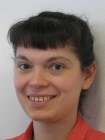O. (Oksana) Kavatsyuk, Dr

Gender inclusive education in the mathematics classroom
(Comenius Teaching Fellow project, NRO funding 2019)
Girls are proven to be as good as boys in Science, Technology, Engineering, and Mathematics (STEM) and this is also the case in the Netherlands. However, significantly less girls than boys opt for STEM profiles and studies in high-schools and universities. While recent CBS data demonstrate positive changes in the number of girls opting for STEM profiles at a secondary school level, this increase was not translated into an increase in female students choosing advanced STEM programs at a university level (undergraduate and postgraduate alike). Prior research had identified some of the reasons for this disparity, e.g. girls’ lower self-concept (belief in own talents and qualities), lack of female role models and cultural stereotypes in society about girls/women and STEM.
This small scale project focuses at exploring how all students regardless of gender could be encouraged to explore their talents to their full potential in the domain of mathematics. We plan to address other types of inclusiveness in other projects in the future.
Our project comprises of two steps:
(i) Project-based inquiry: students in the guidance of faculty members and experts explored the problem “Why certain groups are under-represented in STEM”. They investigated solutions to the problem in order to come up with evidence-based recommendations on pedagogical methods, and will set the requirements for what constitutes inclusive mathematics classroom.
(ii) Intervention: we have applied these recommendations to redesign the existing course: Calculus-1 in accordance with the inclusive classroom requirements.
Optical imaging for treatment plan verification in particle therapy
(STW-Demontrator project, NWO funding)
We ontwikkelen een apparaat waarmee behandelaars een radiotherapiebehandeling met protonenbundels in één keer driedimensionaal kunnen controleren. Nu is men nog genoodzaakt om dat te doen met een groot aantal tweedimensionale metingen, wat zeer veel tijd kost.
Protontherapie is een radiotherapiebehandeling van tumoren waarbij protonenbundels in het tumorweefsel worden geschoten. De protonen beschadigen het tumorweefsel en zijn zeer nauwkeurig te richten, zodat dat het omringende gezonde weefsel veel minder schade oploopt dan bij andere behandelingen. Tijdens zo’n behandeling worden vele duizenden protonenbundels gebruikt. De bundels hebben verschillende energieën, waardoor ze dieper of minder diep doordringen in het tumorweefsel.
Vooraf maken behandelaars een ‘bestralingsplan’ waarin ze exact vastleggen hoeveel protonenbundels op iedere plek van de tumor worden afgevuurd, en welke energie die bundels meekrijgen. Vervolgens controleert een klinisch-fysicus of de bundels daadwerkelijk de gewenste plekken zullen bereiken. De controle vindt plaats door de protonbundels volgens het bestralingsplan af te vuren in een waterbak. De bak bevat op een bepaalde diepte een stralingsgevoelige detector, die het stralingspatroon op die diepte vastlegt. Deze meting moet op een groot aantal diepten, meestal iedere centimeter, opnieuw worden uitgevoerd om een driedimensionaal beeld te krijgen.
We willen nu een nieuwe variant van die waterbak ontwikkelen waarmee in één keer een driedimensionaal beeld van het stralingspatroon te maken is. De praktische bruikbaarheid van de methode zal met het prototype worden getest in klinieken die gespecialiseerd zijn in protontherapie.
Water calorimetry as a primary measurement standard for proton therapy
Proton therapy aims to deliver a killing dose to the tumour with as low as possible dose to the healthy tissue. It offers very high conformity of the dose distribution with the tumour volume, because of the finite penetration depth. High-accuracy dose delivery is essential to realize the potential advantage of protons over X-rays. Dosimetry with the same 1 % absolute uncertainty as in conventional X-ray therapy is needed (currently the uncertainty is 4%) and has to be traceable to the common standard (ionization chambers). The most direct measure for dose is temperature rise (0.25 mK/Gy in water). We are working to improve this method to achieve the aimed uncertainty. A new water calorimeter and measurement protocols will serve for calibration of clinical proton beams. Currently, we are investigating the effects of radiation-induced chemical reactions on the calibration result.
This is a joint-project of the KVI-CART, UMCG, the Dutch Metrology Institute VSL and the Swiss Federal Office of Metrology METAS .
| Laatst gewijzigd: | 25 juni 2022 00:07 |
